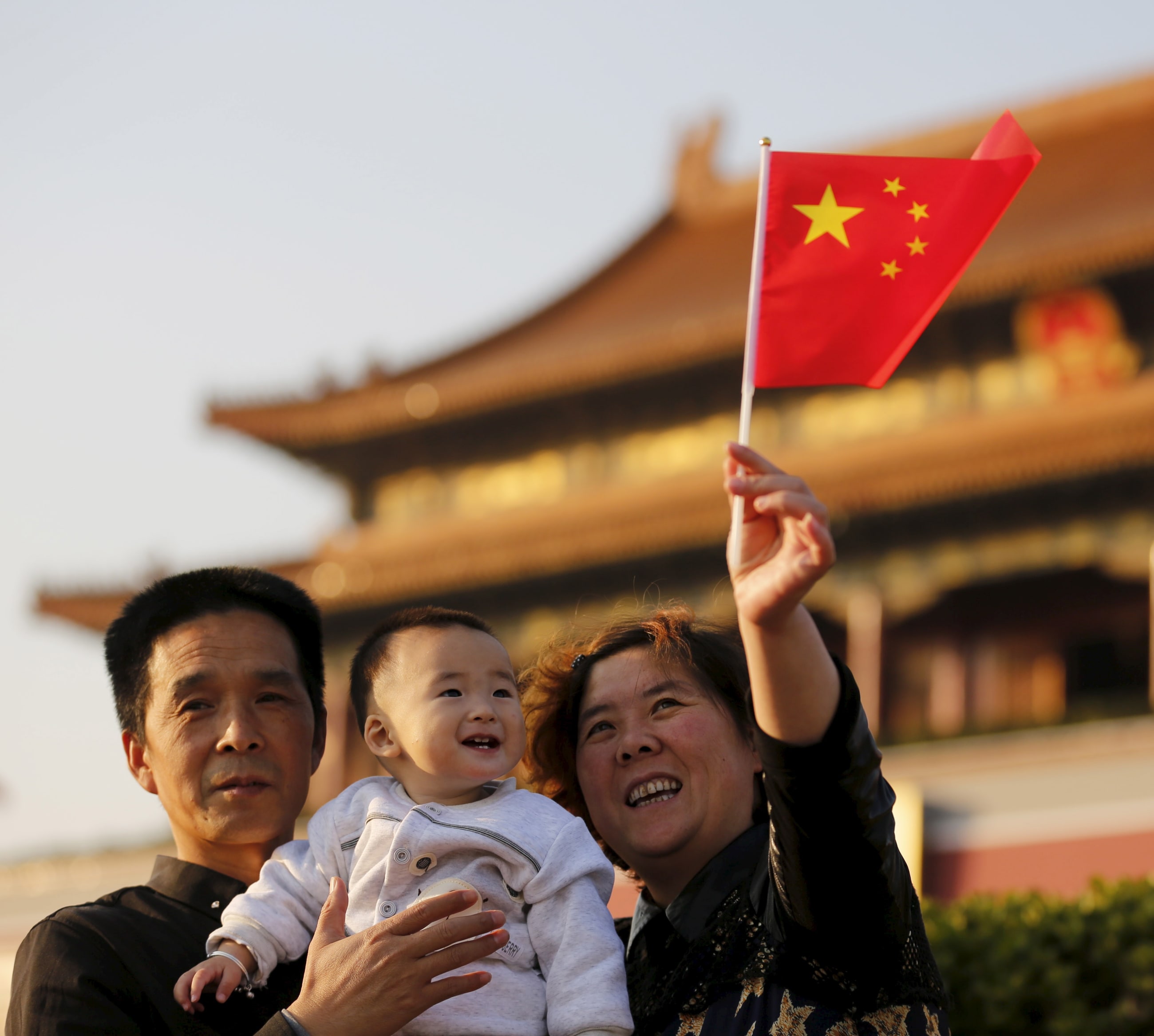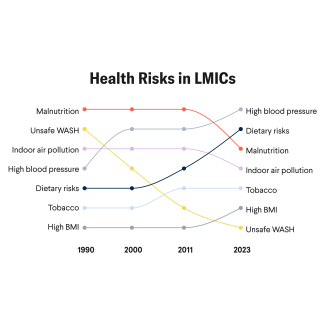In June, China announced that all hospitals with more than 500 beds must provide epidural anesthesia during childbirth by the end of this year—and that facilities with more than 100 beds must offer the pain management by 2027.
China's National Health Commission is imposing the epidural mandate in a decade-long bid to stimulate languishing birth rates in the world's second-largest economy. In 2024, the country recorded its third consecutive year of overall population decline and experienced a small birth-rate bump—its first in eight years. A 2024 UN Populations Prospects report reveals that China's 1.4 billion people could shrink to 1.3 billion by 2050 and then plunge to 633 million by 2100. The report's summary [PDF] states that China "will likely experience the largest absolute population loss between 2024 and 2054."
The epidural rule is the government's latest measure to promote childbirth as part of a pronatalist movement to reignite population growth. China faces a dual demographic crisis as overall dwindling birth rates parallel an aging society. Its government has introduced policies to make assisted reproductive technologies (ART) such as in vitro fertilization (IVF) more accessible, including public medical insurance coverage for fertility treatments and regional subsidies. These measures have helped alleviate the monetary obstacles that many couples encounter while pursuing fertility services. In Beijing, after basic health insurance began covering these services in July 2023, more than 32,000 patients received treatments within the first nine months, China Briefing reports.
Demographers are, however, skeptical that such measures will spur population growth. "Even if you make IVF treatments available for free in public health, their demographic effect is insignificant," says Arjan Gjonça, a professor of demography at the London School of Economics. Given young couples' unwillingness to have children in many countries, "the need for IVF applies only to a very small population—the ones who are sterile." The World Health Organization reports that approximately 17.5% of adults experience infertility in their lifetimes.
Increased female participation in the labor force influences this lack of interest in having children, and it's linked to very little regulatory legislation to support women, Gjonça said. More important, employment insecurity discourages young people from procreating, given that nowadays there are "no jobs for life," as there were for their parents. The average age for a younger person entering the workforce also has climbed as people spend more time pursuing an education and the job market shows signs of instability, he said.
"Often, ART has very little influence on overall fertility," adds Vegard Skirbekk, a professor in the Center for Fertility and Health at the University of Oslo's Norwegian Institute of Public Health. "Most ART cycles fail to produce live offspring," he says. "People overestimate how effective they are, which could lead some to postpone childbearing more than they otherwise would. Postponing can depress fecundity in the end."
China's Depopulation Drivers
Delayed parenthood is one contributor to the demand for these services in a country where the prevalence of infertility rose from 1990 to 2020, about 1% each decade. Drivers of infertility include lifestyle choices such as diet and environmental forces such as air pollution. In February, China Briefing reported that 27 provinces were offering coverage for treatments such as IVF, embryo freezing, and intrauterine insemination. These policy measures had benefited more than 1.03 million patients in China by early 2024, greatly reducing prospective parents' financial burdens related to fertility treatment.
The government's support for IVF "reflects its desire to use all means it finds acceptable to boost the birth rate," says Wang Feng, an expert on Chinese demographics and a professor of sociology at the University of California, Irvine. However, judging from past experiences, "policy has little, if any, influence on Chinese young people's reproductive choices and behaviors," Wang says.
He envisions that it "will be an uphill battle" to reverse the downward birth trend and to raise it close to the replacement-level fertility—the number of children that must be born to sustain a stable population from one generation to another. In developed countries, this level requires an average of 2.1 children per woman. In 2024, China's fertility rate was only 1.01 births per woman, whereas in 1990 it was 2.51.
Various reasons can explain why reversing this ultra-low fecundity will be difficult. "Young people in China are trapped in a post-hypergrowth economy, with much increased cost of living combined with slowing income growth," Wang says. Also, young Chinese women have been outnumbering men in the pursuit of higher education, and female participation in the labor force stands at one of the highest rates in the world. Yet he notes that women "still live in a deeply patriarchal society, with meager political and social representation. These underlying structural forces driving low fertility are not easy to change."
Gender Inequality in Fertility Policy
As women around the world opt to give birth later in life and have fewer children or abandon motherhood altogether, "this positive trend of gender equality and reproductive autonomy is being framed by countries like China as a problem that needs to be fixed," said Nandita Bajaj, executive director of Population Balance, a global organization based in Minnesota that challenges pronatalism. This mindset is "deeply troubling," she says, citing government interventions such as subsidizing of fertility treatments, including IVF, which is known to be a highly ineffective procedure that comes with great physical and emotional cost.
China faces a dual demographic crisis as overall dwindling birth rates parallel an aging society
Bajaj said that China's epidural announcement was another example of the pronatalism movement going too far, adding that it and other countries trivialize the seriousness of childbirth and instrumentalize women's bodies for demographic goals. She said the epidural shot should simply be part of decent health care. "[The epidural policy] shows you just how clueless governments are about the complexity of reproductive decision-making," Bajaj explained.
Meanwhile, unmarried Chinese females who are 27 years old or older are sometimes labeled 剩女 (shengnü), which translates into English as "leftover women." Legal restrictions hinder single women from freezing their eggs in China, even though no such barriers exist for single men who want to freeze their sperm. In August 2024, a Chinese court upheld a 2022 ruling against an unmarried woman suing a hospital that had declined her request for egg freezing. As a result of these gender equality barriers, some women have traveled from China to countries such as the Czech Republic, United States, and Laos for egg retrieval and freezing. On Xiaohongshu, a female-focused social media app with more than 300 million monthly users, plenty of young Chinese women are sharing suggestions on where to travel to freeze their eggs. China banned surrogacy in the early 2000s, but an underground market has emerged.
Egg freezing gives educated, career-oriented women the freedom to stay single longer while leaving open the possibility to have children later in life. Chinese norms have changed dramatically as younger generations move away from "traditional notions mandating marriage and childbearing as indispensable components of life," according to an August 2024 report in the BMJ. Among 14,418 college students participating in a 2021 national survey asking about marriage and fertility intentions, the journal noted that only 49% of female and 74% of male respondents "reported a strong intention for marriage in their life plans, and the planned number of children was only 1.19 among women and 1.55 among men."
Why China's Pronatalist Policies Have Been Ineffective
In general, pronatalist policies have not been effective because "once women achieve the freedom to make their own reproductive choices, they cannot be encouraged or coerced to reverse that freedom for nationalistic goals," Bajaj says. She suggests that, rather than invested in pronatalist policies, funds should be "redirected to programs that support the aging population, including social security, universal health care, pensions, and community opportunities that allow the elderly to lead meaningful and healthy lives."
When China introduced the one-child policy in 1980, the nation's fertility rate had already been declining in response to a much less stringent 1970s policy, which called for later marriage, longer birth intervals, and fewer births, according to the Brookings Institution in Washington, DC. Yet this temporary measure was intended to counter fears that swift and unchecked population growth could stifle economic momentum, strain scarce resources, and lower the quality of life.
More than three decades later, in response to flagging birth rates, the government reversed itself and loosened population-control efforts. Officials replaced the one-child limit with the universal two-child policy in 2016, then in 2021 upped the maximum number of children per family to three.
These policies did not have the intended results. Since the early 1990s, China's fertility rate declined even further, but "coercive enforcement of the one-child limit" wasn't the main driving force—the change stemmed from the consequences of rapid economic development, heightened education, and urbanization, says Martin Whyte, a senior nonresident scholar at George Washington University's Sigur Center for Asian Studies. In particular, Whyte says, "the introduction of the three-child policy was met with much derision, [given that] most Chinese women struggle to cope with their complex lives while raising one child, much less two or three."
In recent years, ultra-low fertility rates have plagued not only China but also other countries, particularly those in East Asia, says Whyte, who is also a professor emeritus of international studies and sociology at Harvard University. For decades, Japan, South Korea, and Singapore have tried a variety of measures to encourage more births, without much success. Even with substantial government spending on daycare and birth bonuses to new parents, he says, China also has had minimal results.
"When and if governments are concerned about birth rates—or fertility rates that are deemed 'too high' or 'too low'—that concern should serve as an invitation to policymakers to more deeply investigate the multitude of barriers that could be standing in the way of people achieving their own goals around childbearing," says Kathleen Mogelgaard, president of the Population Institute in Washington, DC, an international nonprofit that promotes sexual and reproductive health and rights.
"It is entirely appropriate for governments to explore policies that can help to remove those barriers," Mogelgaard says, such as expanding access to high-quality and affordable health-care options, including IVF. Other policies could support people in balancing family life and work or investing in solutions to the rising costs of childcare.
"However," she adds, "when the focus remains on birth rates, governments risk overlooking—or disregarding—the rights and lived experiences of individuals."













